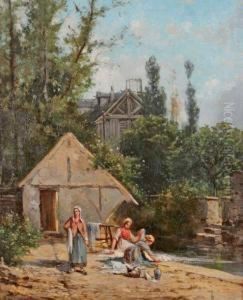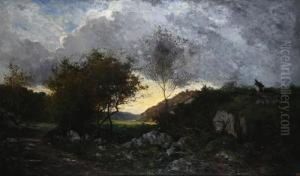Charles Sauvageot Paintings
Charles Sauvageot was a French architect, collector, and musician born in 1781. Although not as widely recognized as some of his contemporaries, Sauvageot made significant contributions in the realm of architecture and the arts during his lifetime.
His work as an architect was influenced by the neoclassical style, which was predominant during his early years. This style sought to revive the principles and aesthetics of classical antiquity, and it was especially popular in France following the Enlightenment period. Sauvageot's architectural projects were characterized by their symmetry, balance, and adherence to classical forms and proportions.
In addition to his architectural endeavors, Sauvageot was an avid collector of art and historical artifacts. His private collection included a wide array of objects, ranging from medieval sculptures to Renaissance decorative arts. His passion for collecting was driven by a desire to preserve cultural heritage and to make it accessible for study and appreciation.
Sauvageot was also a musician, which informed his artistic sensibilities and perhaps influenced the rhythmic and harmonious qualities found in his architectural designs. While music was not his primary vocation, it was an integral part of his life and intersected with his other interests in the arts.
Charles Sauvageot passed away in 1857, leaving behind a legacy that, while not as prominent as some of his peers, contributed to the cultural richness of 19th-century France. His collections were noteworthy for their breadth and quality, and they reflected a deep commitment to the preservation and understanding of Europe's artistic and historical heritage. Although specific details about his life are not as extensively documented as those of some other historical figures, his work as an architect and collector remains a testament to his diverse talents and interests in the arts.


